This article first appeared in an abbreviated form in Artillery magazine. Following is the full text.
The recognized History of Art is marked by a movement, our Blue Chip Art Stars and our institutions. Often more interesting and dynamic, the smaller histories of a regional art community are established by the galleries, art spaces and the people who support them. The many art communities of Los Angeles throughout her times have woven a colorful and innovative narrative.
The period that straddles the new millennium was exceptionally busy and fertile. A lack of galleries created a vibrant alternative art scene, which challenged the ways in which we view and engage with art. Miller Durazo Contemporary Artists Projects was one of the "most established" of these many alternative art spaces.
Artist Robert Miller, empowered with a BFA from Otis and an MFA from UCLA, started his own curatorial exercise with Miller Fine Art. In 1995, he joined forces with pal Martin Durazo who was earning his MFA at UCLA after graduating from Pitzer College with a BA.
Every artist has a day job and Miller was managing real estate properties. Through his grapevine, he secured a space in an old Mediterranean-esque commercial building in the heart of a busy Jewish ghetto on Pico at Robertson Boulevards. Both active in the art world, the two friends, adventure-minded curators, created Miller Durazo Contemporary Artists Projects.
Powered by enthusiasm, wit and discovery, the gallery was an instant success and became an immediate fixture on the city scene. Over a long run, the busy gallery participated in two international art fairs, more than 60 solo shows and multiple group exhibitions. Their annual open call, the $99 Show, attracted superstars such as Paul McCarthy, Don Suggs, Peter Hailey and Mary Kelly.
Like all things that end in Los Angeles, the price per square foot flew over the moon and the neighborhood was gentrified. Miller and Durazo had new projects to pursue. Newly married, Robert Miller was making art and expecting twins. Martin Durazo was stepping up his game; he had joined the stable of famed gallerist Susanne Vielmetter.
Recently, the innovative history of Miller Durazo Contemporary Artists Projects was on view at Rio Hondo College with the retrospective show Lift Off. A culture was celebrated and colleagues reunited. Los Angeles, the great shining city by the sea, has changed much since Miller Durazo closed its doors. Most interesting, their stable of artists are still making art with the same passions of their past.
Following are thirteen artists and the recollections of their life and times with Miller Durazo Contemporary Artists Projects.
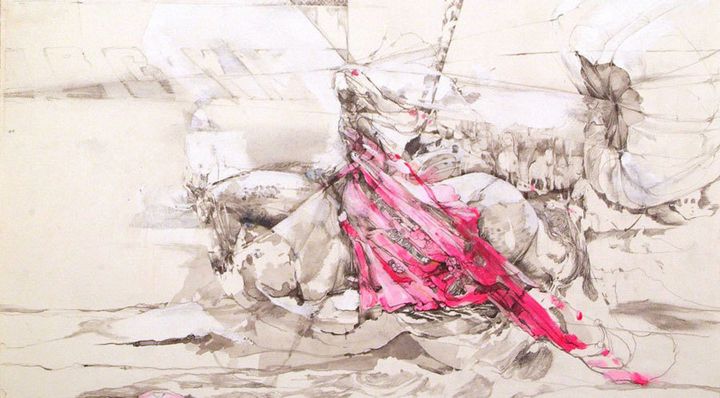
Kelly McClane
Micol Hebron
Feminism 4D (Living feminism in all directions, in all times)
"I showed a suite of photographs in one of their "$99 Store" exhibitions, back when the 99 Cent Stores were having their heyday. It was a series of video stills from my Fountains video. Artist Christopher Haun bought one set, and I believe Chris Acuna-Hansen bought another. It was one of my first shows outside of school and one of the first works that I sold (the other being a ceramic sculpture of planes intersecting buildings, eerily foreshadowing 9/11, six years later).
"It was very exciting and was one of the events that gave me an inkling of what it meant to be a 'real' artist: making, showing and selling work. I felt 'professional.' Robert Miller and Martin Durazo were so amazing because they were totally bananas, breaking all the rules, but they were also serious. Their integrity and passion about making and showing work was infectious and inspirational. They expected a lot, and in so doing, elicited a lot from those who showed at MDCA. There was tremendous energy.
"Art Star Skip Arnold was hanging around in his black leather motorcycle jacket and white tank top. He was one of the first artists I met in real life, after having learned about him in school. There's something magical and amazing about getting to live within the pages of a history book - and among the characters who were presented in your classes as famous, important and influential. Skip's performances and videos were really inspiring to me. They were funny and intense. He used the body in ways that intrigued and inspired me.
"I used to stop by Miller Durazo often and just hang out. I was kind of in awe of the brotherly love and punk attitude that Martin and Robert effused. They were running this gallery that was totally experimental and alternative -- but they also treated it as a very professional endeavor. I learned a lot by watching and listening.
"Martin had a big ol' pick up truck and a pit bull; on the exterior, he was performing a total stereotype. Once inside, hanging out in the MDCA offices, it was clear that he was actually subverting ALL of the norms. He was funny and thoughtful and critical and fearless. He was pursuing his MFA in ceramics, but his work was all about performance and interdisciplinary installation.
"Robert was making a series of large ceramic sculptures of Klansmen. I remember watching in awe, as he would gently lower the hooded heads into the kilns in the ceramic studio on campus.
"That all kind of blew my mind, too. These guys were breaking all the rules, writing their own rules, and bringing all of us along for the ride.
"Once I stopped by to visit Martin and he was talking about a performance idea that he had. He excitedly described to me that he wanted to have me - or someone, a girl, preferably - stick her hand down his throat to make him throw up. As a performance. I remember thinking that I didn't quite get it, but I was impressed at how badass I thought it was that he was willing to entertain such an idea. I can't remember if that was before or after I had made Fountains (in which I throw up the rainbow, one color at a time). I believe he eventually did the performance with S.E. Barnett. I was mildly disappointed in myself for not being brave enough to be the one to stick my hand down his throat.
"I came back to LA in 1992, right after my mother died from cancer. I transferred to UCLA from San Diego, where I had started my undergrad career. I had been studying abroad when all the big stuff happened: when the Rodney King/LA riots happened, when the Northridge Earthquake happened and when my mother fell ill. I moved to LA rather suddenly, and had to adjust and assimilate very quickly. My first apartment was in what was then a very rough part of Culver City and I was the only white person in my neighborhood. I was there as a 20-year old young woman in LA for the first time. It was in the wake of the riots, and the cops were constantly harassing my neighbors, and I was frequently solicited by johns and dealers. That apartment was actually very close to where Miller Durazo would open soon thereafter.
"I finished undergrad at UCLA in 1995. I started working at LACMA in the conservation department after school, and would return to UCLA for grad school in 1997. At the time I graduated from UCLA for undergrad, I was told that they didn't accept people into the grad program if they had gone to undergrad there. For nearly two years, I told all my former professors that I was going to apply to grad school there. And for nearly two years, they told me 'don't bother, you won't get in'. I applied anyway - and got in. I was in grad school from 97-2000.
"The mid-late 90's were an interesting time in LA and at UCLA. It was in the wake of the Culture Wars, and in the middle of Identity Politics. UCLA had a truly all-star faculty line-up, and there was a LOT of attention on the school at the time.
"The energy and excitement was high, as was the pressure. Jason Rhodes was Paul McCarthy's protégé; the Khedoori twins were seducing everyone with their thoughtful and critical work. (All the undergrads were trying to remember which one of them was dating Jason.) Jennifer Schlossberg was working on what would become her tell-all book about the shenanigans at UCLA at the time; Charlie Ray was getting stoned with students on his sailboat; Paul McCarthy had brought a young, then barely known artist named Murakami to guest teach in the New Genres department. (Murakami's class was my first TA-ship.) Richard Jackson was teaching in the sculpture department and he was an incredible teacher. He was also the first prof I had who openly swore in class and that blew my mind, too. Toto, we're NOT in Kansas anymore.
"By grad school, I had moved to a tiny apartment in midtown near LACMA and was working as a conservation assistant to Susan Batton, who is now the director of the San Jose Museum of Art. I lived near Katie Grinnan and Delia Brown, and we would host roving dinner and cocktail parties with the other UCLA grads. Each of us would have a different cocktail or snack at our place. Everyone would come over, and then we'd walk to the next apartment. Katie always had some giant sculpture made out of Rice Krispie treats, and used palettes for furniture.
"Life in the grad studios was intense and awesome. We seemed to be there all the time. Everyone was very serious about their work and their practices, and we virtually lived in the studios. There was a greasy spoon diner in Culver City that was open 24 hours, and we'd go to breakfast at 4 or 5 in the morning after being in the studios all night.
"I was doing performance, performative videos and installations. It was pretty essentialist in some ways. I was barfing rainbows and birthing the contents of my purse, and roaming around naked and blindfolded. :)
"During that time period there was a robust scene of alternative art spaces. The club scene in Hollywood was amazing then, too. Michael Arata was doing the One Night Stand exhibitions in hotels; Dave Muller was doing Three Day Weekend. Mary Leigh Cherry was doing exhibitions in her garage in Venice.
"The gallery scene wasn't as big and market-driven as it is now. There were influential commercial galleries, of course. Patricia Faure, Margo Leavin, Patrick Painter, ACME, Blum and Poe and LA Louver stick out in my mind as some of the more active galleries, but there was also a ton of smaller spaces and artist-run spaces.
"I also had a space during that time, from 95-97. It was called Gallery B-12. It was an artist co-op gallery in Hollywood, off Ivar and near LACE and Hollywood Moguls. (Who remembers that club??). I ran Gallery B-12 with a group of friends from undergrad. We did performance, group shows and poetry readings.
"MDCA was profoundly influential for me and countless other artists. For me, it was an early example of art as social practice, though I didn't have that language at the time. Martin and Robert were artists supporting other artists, providing opportunities for each other and building community.
"MDCA felt like a clubhouse. It was inclusive, and simultaneously held up high standards for art and exhibitions. I met and hung out with so many wonderful artists whose generosity and dedication to their practice would influence me for years thereafter: Kelly McLane, John Geary, Skip Arnold, Habib Kheradyar, Jamie Scholnik, Kelly Barry, Chris Pate, Kim Schoenstadt...
"I now run a space in Eagle Rock called The Situation Room. Spaces like MDCA had a direct influence upon my development of this space. The Situation Room is a community project space developed with the intention of serving the needs of the creative community when traditional gallery spaces are not sufficient or appropriate. I think of MDCA as providing an important precedent to this mission.
"I am so grateful to Martin and Robert for their initiative and integrity, and for their dedication to LA art and artists. :) LA is lucky to have MDCA in its history."
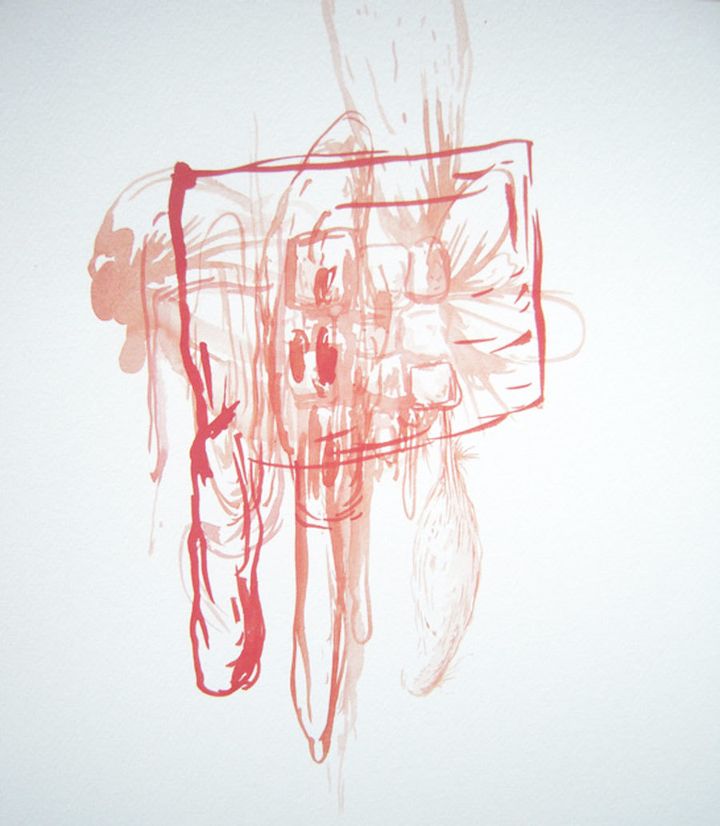
Anders Lansing
Max Presneill
Artist & Curator
"I moved to California in 1997 without knowing anyone here. As I tried to engage with the LA art scene, slowly and self-consciously, there were a number of times when more established people in the scene were rude or dismissive, although most people were very nice.
"Then I bumped into the Boys, Martin and Robert. I finally met some peeps who were unpretentious but knew their stuff and were having a blast! They were inviting, inclusive and I felt like I had finally found a small section of the tribe I wanted to be a member of.
"These were folks to get fucked up with and to hang with, even when no art was in sight. A tight group of people seemed to meet and become friends during their openings - a bringing together of the waifs and outcasts, the insiders and the ambitious, looking for stress free comrades to shoot the shit with.
"Parties. Sex, drugs, rock and roll, or at least an art world version with too little money!!! We all worked hard, woke up drunk (and often in someone else's bed), and supported and spread the word for each other.
"Now, 20 years later I still see the same clan get-together vibe when a number of that crowd get into the same room together.
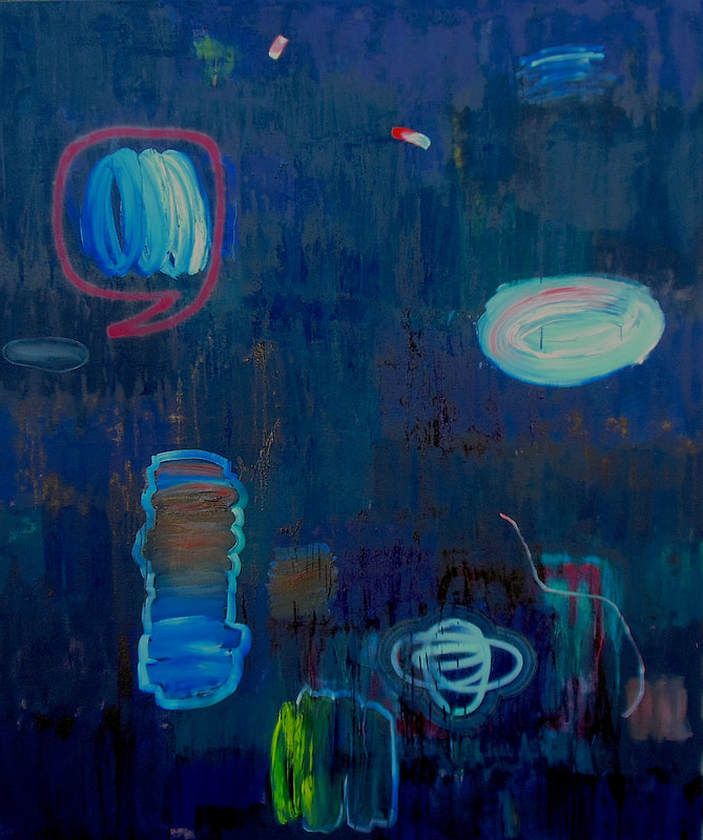
Max Presneil
During the ’95 to ’03 period, what was your life like? "Broke but ambitious, badly fed but well watered, living a cliché and proud of it, struggling and laughing all the way. There were rough times too, but that is the same for everyone. Remembering with nostalgia is easier, but does not negate the truth of feeling like we were growing up together, in an art career sort of a way, in becoming what we dreamed of, warts and all. I feel like we were all part of an art world Brat Pack, without the looks, money or fame!!!
What was your art like? "My paintings shifted between figurative streaks and abstract periods.
How has your art evolved now? "Ha, ha - ‘evolved' might be the wrong word!!!I am presently in an abstract mode, with large-scale works and tiny drawings.
In the ’95 to ’03 period, what force or relevance did Miller Durazo have in Los Angeles? "It was, alongside POST, one of the two spaces I most wanted to show at when I got to LA. MDCA was showing strong work, where artists I admired were connected, was underground but also linked in to the gallery world.
"I started Raid Projects back then to try and follow the same kind of DIY support for artists as these two were doing. That helped integrate me into their scene and led to showing with both and becoming friends with Martin, Robert and Habib from POST. We have all shown with each other, at each other's spaces. My bubble-view is that POST, MDCA and Raid Projects were the scene for emerging artists back then. It should have had its own soundtrack!
"MDCA was not only a place to bump into other artists but somehow created the right atmosphere where many friendships started which lasted up to the present day. It helped build a solid community of artists who have continued to support each other both professionally and personally.
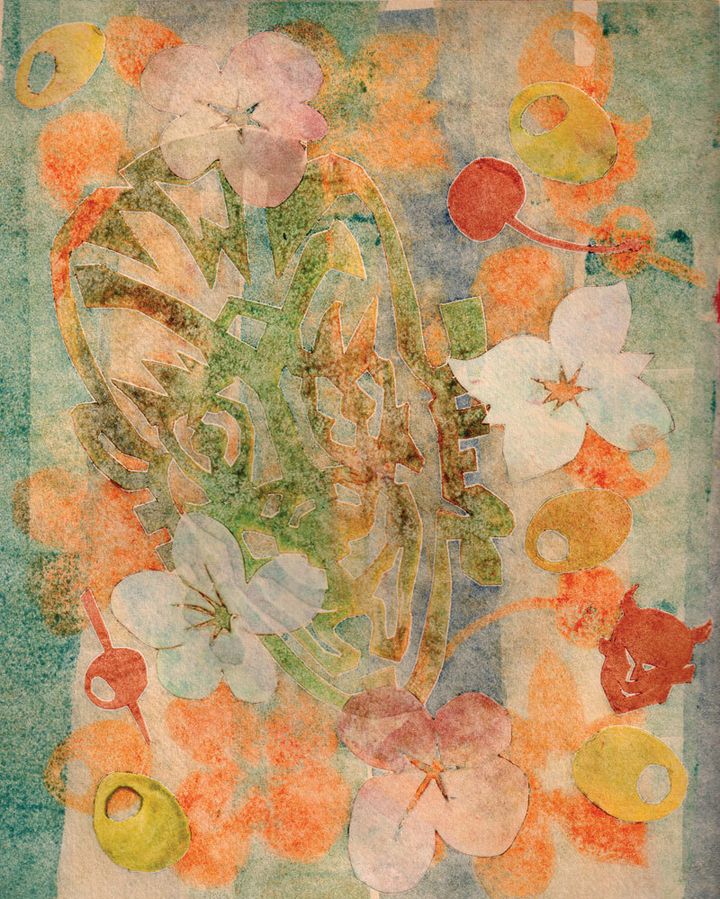
Gordy Grundy
"I first heard about Miller Durazo when Christopher Pate had a show there. I think he was one of their first shows. I had worked with Chris at Cooke's Crating, the art moving company, and was interested to see what he was working on, and interested in the new space. I honestly don't remember much about the show.
"Martin Durazo and I had worked together at Cooke's Crating, too. He was either still at UCLA or freshly graduated when he and Robert started doing the gallery. I remember the space was on the second floor. You had to walk up a thin set of stairs to get up there. Three rooms: a small room that faced onto Pico, a smaller room that was in the hall, and a larger room that faced onto the parking lot. They also hung stuff in the hallways. Usually they did group shows, or split up single artists into each room.
"I started going to all the openings there. They were always a party. And it was a group of people like me: young, naive, starting out, and still believing in the power of art. (You only get to be like that once in your life, and I miss those days.)
"Nobody was really concerned about selling. We were all happy to show. We all dreamed of being art stars someday. I have fond memories of sitting in the back of Jared Pankin and Kelly McLane's pick up truck drinking cheap beer in the back parking lot. Most of us would hang out there partying. It was usually pretty hot upstairs in the gallery space, especially in summer.
"My solo show was in July of 1998.I had showed some of my porno collages with Patricia Faure a few months before in a large group show that included Baldessari and Salomon Huerta. (It was called "Some Lust.") Martin had seen the work and really liked it. Of course, he was making pornographic based work as a grad student at UCLA. (He did a porno film parody of the art world with real porn stars and real sex that I embarrassingly sat through in a showing at Richard Heller's gallery.)
"I hung 132 individual pieces on the walls of the large back room. Each was a 6" x 9" unframed piece of paper with a porn cut out in the middle. I hung them with photo corners, a pain in the ass to do. They covered the walls like wallpaper, in a sort of grid pattern.
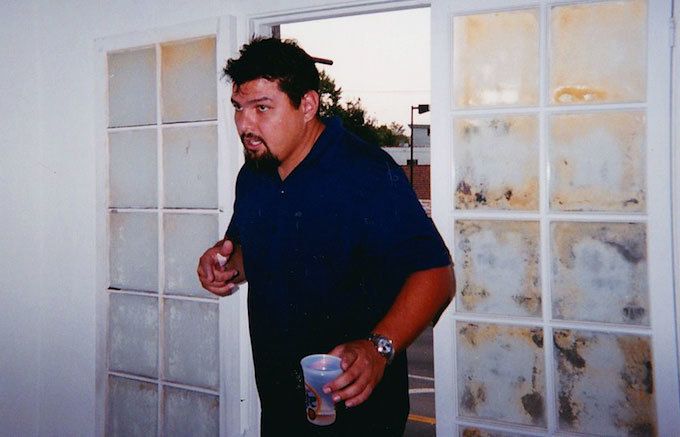
Martin Durazo
"Unknown to me, Martin had invited two other artists to show with me. They took the other two rooms. One was an avowed feminist. She was kind of furious when she saw my work. The other woman made small paintings of banal objects that she hung together in loose narratives.
"I think Martin thought it was pretty funny to put our artwork together without telling any of us what he was doing.
"I showed up early for the opening. It was miserably hot. The first person to show up was a female friend, who worked for another gallery. She tore into me for the perceived misogyny of the work. How dare I use images of naked females from pornography! Didn't I understand what a scumbag I really was?
"It ruined me for the rest of the opening. I felt like I needed to defend the work to every woman who showed up. (Most didn't think it was very risqué and most weren't offended in the least.)
"Finally, two mutual friends showed up and explained to me that the offended artist was a Mormon. (Of course she was!)And then I really started drinking.
"A couple of weeks later Peter Frank made the show "Pick of the Week" in the LA Weekly. (July 31-August 6, 1998 issue.) It was the first review I ever got, and I believe it was the first review that Miller Durazo got.
"The Kurt Schwitters of stroke books, Vegas culls phone-sex ads in magazines and newspapers, lopping and chopping myriad tangles of bodies, parades of lascivious smiles and incantatory repetitions of 900 numbers into compact geometric arrangements that float on the surfaces of small, unframed papers. Vegas' cutup abstracting suppresses the turn-on quotient per se and brings out instead the rhythms of pornvertising, the almost ritualized recurrence of buckled haunches on bedsheets, flashes of lace and lipstick, and other signs of scopic sexuality."
"Months later I ran into Peter at a party. I told him I didn't like being called the Kurt Schwitters of stroke books. He laughed and said, "You know Kurt Schwitters is my favorite artist. “Which forced me to rethink things. What I thought was a put-down was a compliment. And, looking back on it, Peter really understood the work.
"After the review Martin wanted to give me another show. But I got picked up by a gallery, and things got more complicated than they should have been.
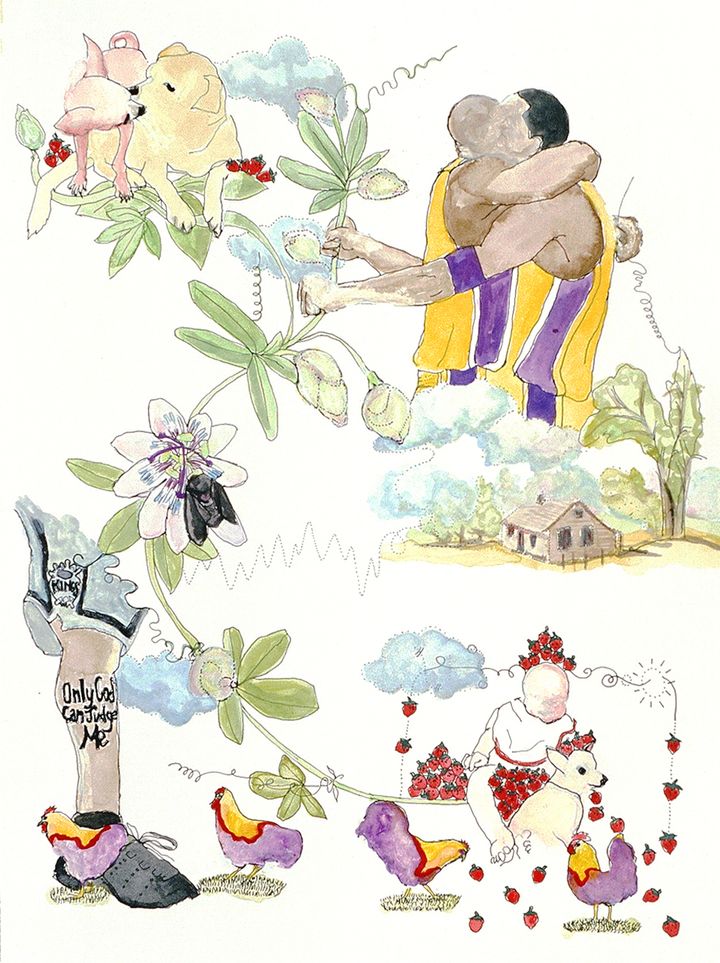
Emily Wagner
"You never knew what you were going to see at Miller Durazo. I always felt like there was a subversive sense of humor behind the whole program, intended or not. It was fun to be there. I always knew people, and was always meeting new artists. And it was always a great party. (Usually a keg in the parking lot.)
"It was also obvious how much Martin was trying to use the gallery for his own gain. Showing NY artists so he could get in good graces with their NY galleries. Working all his angles. Pretty smart when you think about it.
"And I always felt like Robert was the adult in the relationship. He was the one who made it work. Martin was the troublemaker. And then there was Bob. Who was a Hollywood agent? I never knew what his relationship to the gallery was. Saw him at the Rio Hondo opening and it brought back alot of memories.

The LA Weekly chooses Mike Vegas as their coveted Pick of the Week.
Anders Lansing
Oil/Flashe on canvas
Miller Durazo shows: Solo: Vacation, 1997; Group: Drawplay, 1999; Plumb, 1997; Winter, 1997
"Great openings in the parking lot out back.
"My Art Star moment was my painting in the background of Martin’s MFA
film. “Suck it Up” was shot at the gallery.
During the ’95 to ’03 period, what was your life like? "Living the life, post-divorce…studio downtown and shacking up with my girlfriend in Hollywood.
What was your art like? "I was making minimalist finish-fetish paintings that were then inserted into environments that I built. How has your art evolved now? The work is less minimal and deals with a different type of environment.
“I think along with POST, Miller Durazo created a space for exhibiting artists that was not dependent on sales but ideas. Martin and Robert are good guys.”
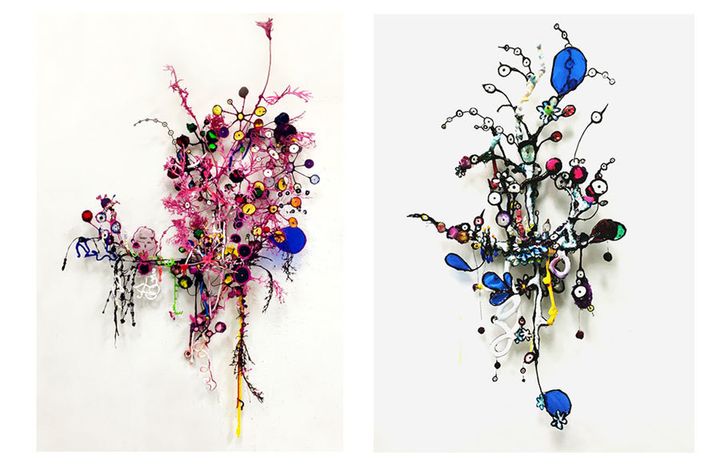
Maura Bendett
Martin Durazo
Painting
"I think the first show was fantastic, so many people came to support. It was a group show called Winter and a solo project by Michael and Magdalena Frimkess. I remember looking out the rear window of the gallery, down to the parking lot and seeing 300+ people.
"The other show that stood out was the debut of Ruby Osorio's girl drawings. A smash hit and the beginning of a great career.
"I was really touched when several of my professors at UCLA gave work to our annual $99 dollar show, Paul McCarthy, Peter Halley, Don Suggs, and Mary Kelly to name a few.
"From 1995 to '98, I was an MFA candidate at UCLA. Afterwards, I taught and had shows at POST, the Richard Heller Gallery, Otis College of Art and Design and Susanne Vielmetter.
"While directing the gallery, I had the pleasure of working with so many artists and we all shared our vision of art and creativity.
"I have continued to curate the occasional show and exhibit. Most recently, a solo show at the Barbara Davis Gallery in Houston, and a group show in Riga, Latvia, curated by Popper Publishing at Gallery Alma.
"The time of MDCA seems so long ago but working with Robert Miller and all the participating artists on LIFT OFF reminded me how much of each effort was rooted in love and sharing.
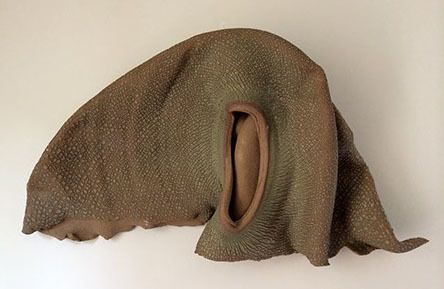
Robert Miller, Ceramics
Sculpture, activities, photo, drawing, painting, installation.
Your shows at Miller Durazo? "Killer Rainbows. I mostly remember random openings. It was a nice gritty time to get together with other artist and complain, dialog, plan and socialize. It was more like an art club.
"Life was bleak in the mid-nineties. I was teaching for low income and the future did not look promising. Things got much better as we approached the millennium. I was making "Pet Space" sculpture and photos. This included the colorful and grayscale rainbows. Content oriented." How has your art evolved now? "Same, just more edgy content.
"Miller Durazo filled an alternative niche, like the "One Night Stand" shows we were doing at the Farmer's Daughter Motel on Fairfax. (A series of rooms were rented for curated artists to exhibit their work.) There were about six or seven alternative for-profit spaces at the time.
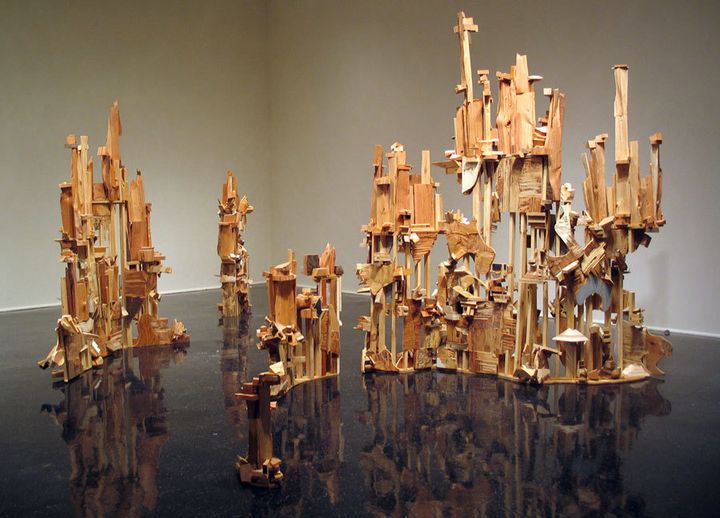
Jared Pankin
Drawing/Painting
"I had my first real solo show at Miller Durazo. I remember that I had been making a lot of these small, intimate drawings for myself and never really thought about making them public, but they asked to show a batch of them. I had no idea what to expect from the exhibition.
"On opening night, Miller Durazo sold almost all of the drawings. It was an exciting time. There was a lot of social energy around the space, and for me, there was this first sense of the joy of making and sharing work with a wider audience.
"Miller Durazo opened up a lot of creativity and opportunity for me as a result of that show."
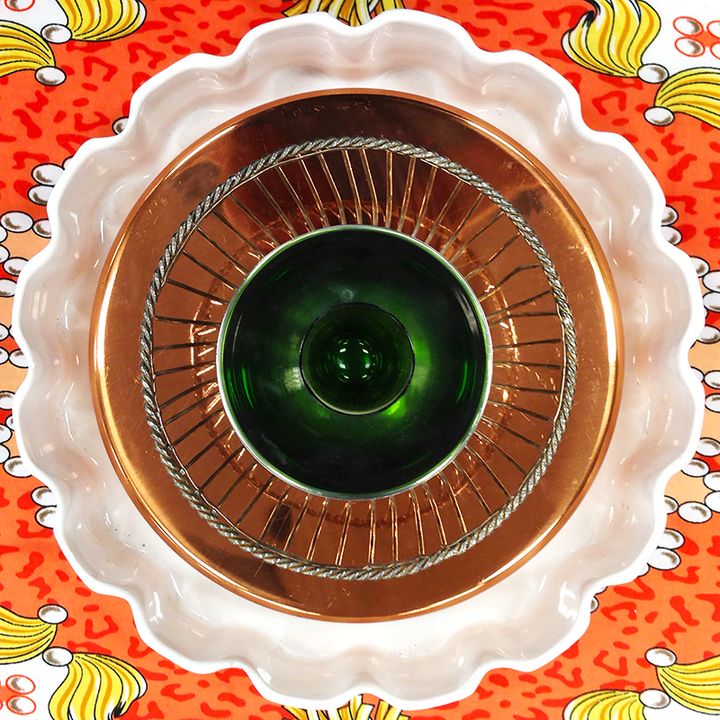
Seth Kaufman
Works On Paper
Miller Durazo shows: Gameboy, Spells and Flo(w) Is That
"For Flo(w) Is That, I had a shrine to my dog Flo, where she sat daily and greeted gallery goers. She was working on becoming enlightened and non-attached, so she struggled with her stuffed animal that she wanted to play with and let go of, at the same time. All in all she thinks the show was a hit.
"During that time, I was on a TV Show and could spend my off-days working on making work. I had a little bachelor apartment that I rented as a studio. I made a ton of work. Glory days! Then I had kids.
What was your art like? "Small works on paper. Then I needed to move so I could make bigger work and I did. My drawings went from small scale to over ten feet long. I don’t get to make much work now, mostly commissions only. I got into painting on fabric and abstract textile work.
"Miller Durazo was a hot bed of young artists on the cusp of being discovered. They took risks, and sought off the beaten path talent. A lot of amazing artists came out of there and went on to make significant waves in the art world. I went on to being repped at a little Chinatown gallery, Acuna-Hansen. From there, I got a gallery Mixture Contemporary in Houston (both closed!) and a video work was in a show at the Hammer Museum.
"Martin worked closely to push me, always, and challenged me at every turn. Just when I thought I was done, he would say, great start! He was my mentor, and still is, if I ever need an eye or an ear. I trust him implicitly. Robert was always lovely, warm and supportive. He brought a real family element to the space and always made the artists feel worthy and deserving. It was truly special in that way."
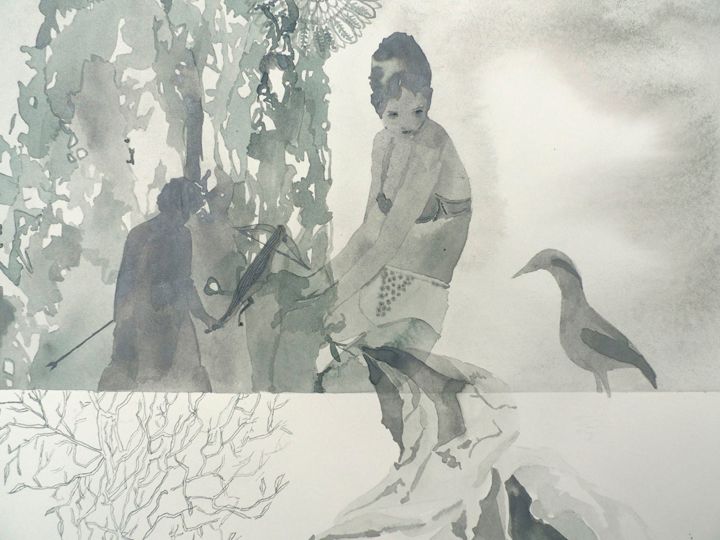
Ruby Osorio
"My name is Jared Pankin. I am a sculptor. I work with wood, glue and lots of saw dust and fake animal parts. I also am a master potter. I live with my wife of 26 years, Kelly McLane. We live in the woods, across the street from the southernmost point of the Sequoia National Forest. I went to graduate school with Robert Miller and have kept in touch with him over the years. If he opened a gallery today, Kelly and I would show with him in a heartbeat. That's how much we like and trust him. Martin was a great addition because he was and still is tapped into the art world beat.
"Kelly and I had a solo show at Miller Durazo in 1997 along with artist Eve Wood. One thing that stands out the most about those years was you went to the openings not only to support the gallery, but all your friends were there. Beer in the parking lot, sitting on the tailgate of Martin's recent pick up truck, after that is was El Coyote or Robert's place for more beer. Everyone was welcome, and even though we live in the woods, when we do go to LA, we see old friends we met at Miller Durazo."
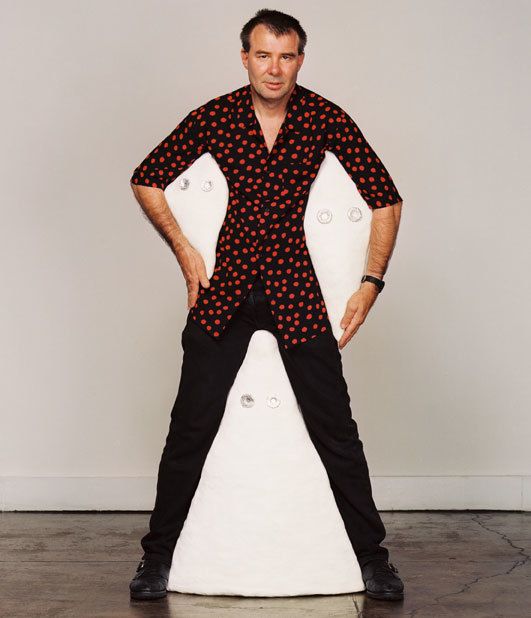
Mike Arata
Artist
"It was an intimate space that seemed womb like, more akin to a private collector's lair than a public art gallery... as I walked up the stairs I remember having the feeling of entering into a safe space, a private club, populated by likeminded art lovers, away from the pressures of daily life and even in and around the competitive art world. It felt like something smart and sweet was happening."
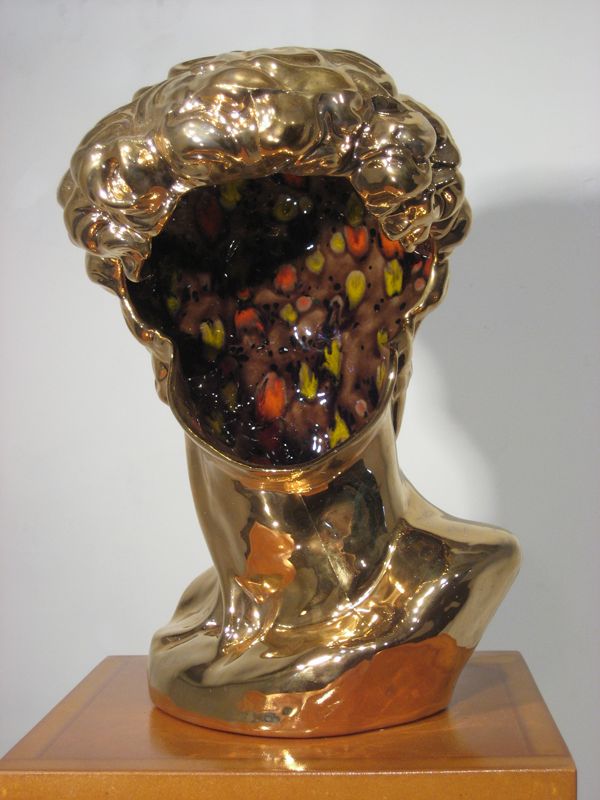
Seth Kaufman
Artist
The past, a ghost, hovers behind me, always quiet and out of sight. I've become adept at forgetting he is even there. Then he taps me on the shoulder, a surprise. Wrapped in a purple haze, the whispers are oblique and unclear. The smoggy memories of past comfort and joy are the first to arrive. But their warm presence demands too many questions without easy answers. The breeze turns chilly. It's better to keep a lid on the box.
When Robert Miller reintroduced me to two small abstract paintings for the Lift Off show, it was like an old hook-up had called to inform me that I was the father of a teenager. After the shock and confusion, the fog of the past began to clear. The paintings were like seeing two dear old friends.
Every artist has loved their work. I remembered the creation and the choices I faced. We follow an inkling. Thoughts materialize into marks. Color changes. A piece builds, then dances or lurches to a completion. At the time, I was experimenting with scale and abstraction in an expressionistic way. I smirked at one of the old works; sensationalism over substance. I stepped back to admire the other; it was pretty good.
I remembered the paintings, but the circumstances remain unclear. What was I thinking? Where was I living? Who was I living with? What dog did I have? What wheels? There are now many road miles between past lives. Like a slow strobe, images of Miller Durazo popped to the fore. The faces. The smell of fresh paint, citrus perfume and clean sweat. People looked good. The din, like buzzing bees, was always happy and hopeful. The busy street sounds of Pico and Robertson were never far away. The gallery was exciting, like life, as we all knew important things were happening.
The words assembled for this document pull me back. Max refers to the parties and only the best of bad behaviors. Yep. Maura mentions the endless shows, the single-minded focus and busy, hard work. Yep. Seth speaks of a womb. Yep. A beautiful and warm history. But I'm too chicken. The past feels vague, muggy and scary; I prefer fog across my windshield. Digging up dates, unearthing hard truths, lost causes and bum luck. I'm afraid too many scabs are still fresh. I prefer to remember later, when I grow up.
I'll snuggle in with what I know. In the days of Miller Durazo Contemporary Art, the LA art world was growing in size and relevance. Grad schools were pumping them out and the territories were clearly defined. The characters were outsized. The stories scorched earth. The art world was humming an international tune. The burrs of conceptualism were sanding smooth. The media could only make so much noise and we all spoke and heard clearly. Micol is right; it was a time of great and urgent discoveries. The culture in the petri dish was vibrant and buzzing. Los Angeles, in all her glory, was shaking and Miller Durazo Contemporary Artists Projects was smack in the middle of it.
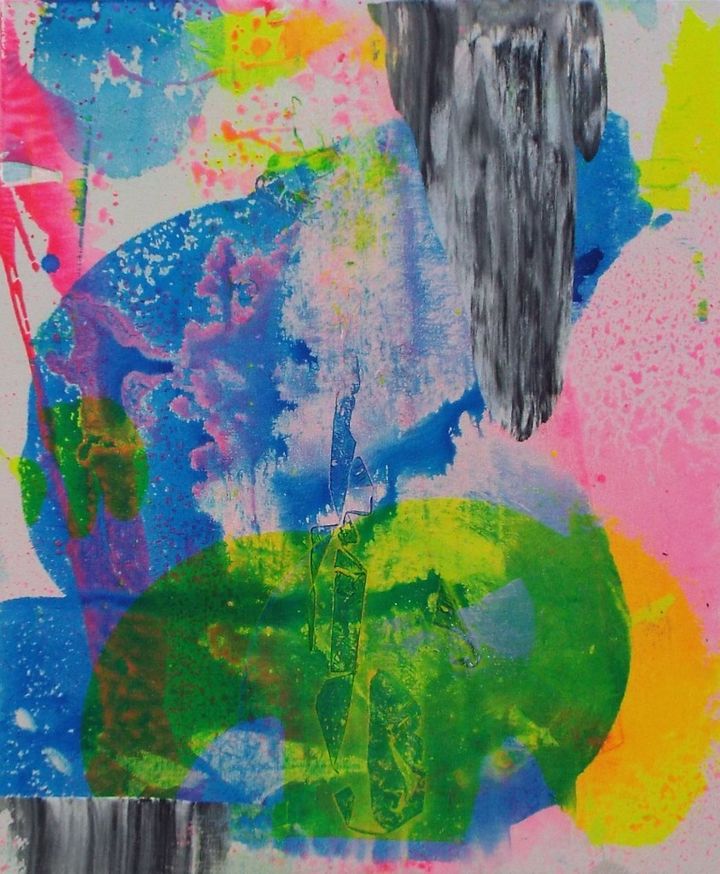
Martin Durazo
Maura Bendett
Instagram and Artillery Magazine, 2016 feature story
"Between 1998-2000, I went to most of the openings at Miller Durazo, because I liked hanging out with Robert and Martin, and all my friends were in shows there. The openings were really fun and involved a lot of drinking. This was when beer and wine were cheap, and you couldn’t have an opening without them, it was expected.
"Miller Durazo was down the street from where I lived with my boyfriend. So when Robert asked me to participate in the $100 auctions that he and Martin organized at their gallery, of course I said Yes.
"I loved the vibe at Miller Durazo, and the building/gallery itself. It seemed to spring up and exist alongside the old butcher shops, Jewish bric-a-brac shops, synagogues, upstairs in the classic Pico at Robertson neighborhood, and I felt at home. It was small and intimate and a perfect location to hang and socialize. I think these small galleries (Miller Durazo, POST, Domestic Setting, TRI, etc.) were instrumental in fostering connections among young developing artists. Where else could we go to meet each other and connect?
"I realize how awesome and simple my life was back then between 1995-1999. Pre-internet, it was so easy because the art world was small and all the emerging artists in LA seemed to know each other and hang out in a few galleries:
MDCA (Martin and Robert), Domestic Setting (Bill Radawec), POST (Habib Kheradyar), TRI (Rory Devine), LASCA (Carl Berg), Sue Spaid Fine Art (Sue Spaid).
"I was in my mid-late 30’s, worked odd jobs, was beginning to teach and my boyfriend and I lived month to month. We were always broke, but I didn’t care because I had an awesome studio on Washington Boulevard at Crenshaw (now called West Adams), and all I wanted to do (and did!) was make art, show it, and hang out at openings.
"Between 1995-2000, my art was beginning to develop into what it has become today. In 2017, I can appreciate that it has truly come full circle, in spite of lots of side trips into weird experiments and failed bodies of work.
"In 1995, I was still making 2-D oil paintings that were abstract with nature/organic references, but between 1995-2000, my art went through a huge shift and evolved into what I now see is my language, style and calling.
"I shifted from oil to acrylic, started attaching small drawings of abstract blobs, flowers and creatures onto the surface on small wooden blocks. Then I got rid of the canvas altogether and the drawings became connected by wires, and then evolved into sculptures.
"Sometime in approximately 1996, I remember the exact moment I was playing with Sculpey (a polymer clay), in my apartment, and I rolled some Sculpey into a sea anemone shape. Something went off in my head and a voice said to me, “This is your future.”
"In approximately 1997, I learned how to weld so I could make more permanent steel armatures as a sturdy base for the sculptures, and then my ambition took off and I worked like crazy and made tons of and tons of work. I worked as much as possible, night and day, five to seven days a week, when I wasn’t at one of my day jobs.
"It really was an idyllic time, you could easily drive to three or four different openings in one night, from MDCA to POST downtown, drinking at each opening and very little traffic! I feel really grateful that I lived in LA and got involved in the art world in the 1990’s. It was a special time, because mainly it was before the internet. We still used slides! I still had a pick-up truck with a stick shift! I was super busy and I was constantly in shows, for like five to six solid years.
"In 1999-2000, my relationship ended and my life changed and after that my career shifted and I moved on to work and show with Roberts & Tilton in 2005.
"I continue to be friends with everyone from the MDCA scene. In fact, I just did a studio visit with Martin, and plan to have him visit my studio in the near future. I feel lucky to know them and to have been a part of it.
"The opening of the LIFT OFF show was really fun, catching up with old friends. It’s very heartening to see my peers continue to make art and I feel really grateful that I lived in LA and got involved in the art world in the 1990’s."
"The opening of the LIFT OFF show was really fun, catching up with old friends. Given all of the changes to our world and the difficulties of a life in the arts, it is very heartening to see that most of my peers are steadfastly making art. It is the life we have chosen.”

Today, Robert Miller is a tenured professor and gallery director at Rio Hondo College, the site of Lift Off. He continues to work and exhibit his ceramics.
Martin Durazo continues to show locally and internationally. The celebrated Barbara Davis Gallery in Houston, Texas represents him.
All of these artists are currently making and exhibiting art with dedication and passion.
This reunion of artists, all kindred souls, demonstrates the dynamic and calling of a long life in the arts. No matter how high-minded the pursuit, friendship and beer are always at the heart of it all.

Gordy Grundy is a Pacific-based artist. His visual and literary work can be found at www.GordyGrundy.com
